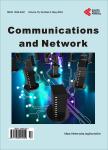A Framework for Multi-Hop Ad-Hoc Networking over Wi-Fi Direct with Android Smart Devices
A Framework for Multi-Hop Ad-Hoc Networking over Wi-Fi Direct with Android Smart Devices作者机构:Department of Mathematics and Computer Science Faculty of Science The University of Ngaoundéré Ngaoundéré Cameroon Laboratory of Mathematics Computer Science and Applications Faculty of Science The University of Ngaoundéré Ngaoundéré Cameroon GRIAGES Catholic University of Central Africa Yaoundé Cameroon
出 版 物:《Communications and Network》 (通讯与网络(英文))
年 卷 期:2021年第13卷第4期
页 面:143-158页
学科分类:0809[工学-电子科学与技术(可授工学、理学学位)] 08[工学]
主 题:Wi-Fi Direct Android Smart Devices Mobile Ad Hoc Network Framework Connection Protocol Multi-Hop Service Discovery
摘 要:The wide diffusion of mobile devices that natively support ad hoc communication technologies has led to several protocols for enabling and optimizing Mobile Ad Hoc Networks (MANETs). Nevertheless, the actual utilization of MANETs in real life seems limited due to the lack of protocols for the automatic creation and evolution of ad hoc networks. Recently, a novel P2P protocol named Wi-Fi Direct has been proposed and standardized by the Wi-Fi Alliance to facilitate nearby devices’ interconnection. Wi-Fi Direct provides high-performance direct communication among devices, includes different energy management mechanisms, and is now available in most Android mobile devices. However, the current implementation of Wi-Fi Direct on Android has several limitations, making the Wi-Fi Direct network only be a one-hop ad-hoc network. This paper aims to develop a new framework for multi-hop ad hoc networking using Wi-Fi Direct in Android smart devices. The framework includes a connection establishment protocol and a group management protocol. Simulations validate the proposed framework on the OMNeT++ simulator. We analyzed the framework by varying transmission range, number of hops, and buffer size. The results indicate that the framework provides an eventual 100% packet delivery for different transmission ranges and hop count values. The buffer size has enough space for all packets. However, as buffer size decreases, the packet delivery decreases proportionally.



